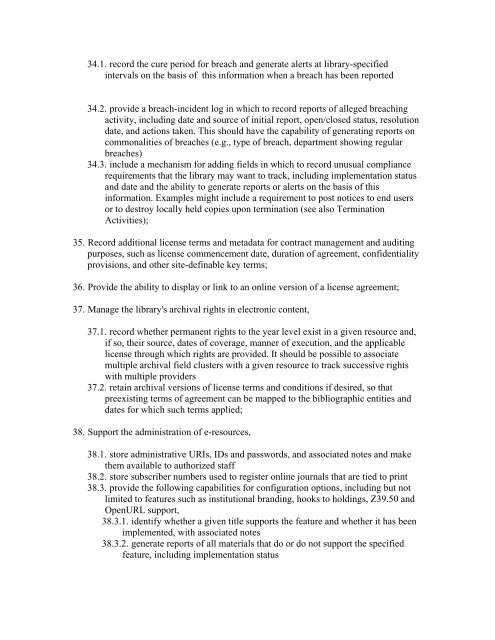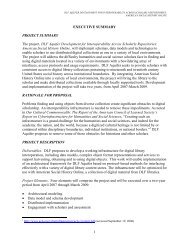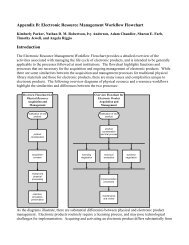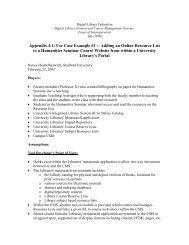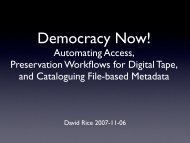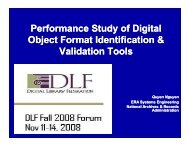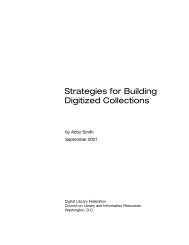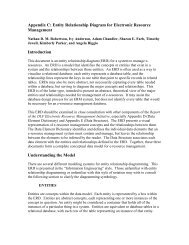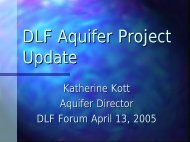Functional Requirements for Electronic Resource Management
Functional Requirements for Electronic Resource Management
Functional Requirements for Electronic Resource Management
You also want an ePaper? Increase the reach of your titles
YUMPU automatically turns print PDFs into web optimized ePapers that Google loves.
34.1. record the cure period <strong>for</strong> breach and generate alerts at library-specifiedintervals on the basis of this in<strong>for</strong>mation when a breach has been reported34.2. provide a breach-incident log in which to record reports of alleged breachingactivity, including date and source of initial report, open/closed status, resolutiondate, and actions taken. This should have the capability of generating reports oncommonalities of breaches (e.g., type of breach, department showing regularbreaches)34.3. include a mechanism <strong>for</strong> adding fields in which to record unusual compliancerequirements that the library may want to track, including implementation statusand date and the ability to generate reports or alerts on the basis of thisin<strong>for</strong>mation. Examples might include a requirement to post notices to end usersor to destroy locally held copies upon termination (see also TerminationActivities);35. Record additional license terms and metadata <strong>for</strong> contract management and auditingpurposes, such as license commencement date, duration of agreement, confidentialityprovisions, and other site-definable key terms;36. Provide the ability to display or link to an online version of a license agreement;37. Manage the library's archival rights in electronic content,37.1. record whether permanent rights to the year level exist in a given resource and,if so, their source, dates of coverage, manner of execution, and the applicablelicense through which rights are provided. It should be possible to associatemultiple archival field clusters with a given resource to track successive rightswith multiple providers37.2. retain archival versions of license terms and conditions if desired, so thatpreexisting terms of agreement can be mapped to the bibliographic entities anddates <strong>for</strong> which such terms applied;38. Support the administration of e-resources,38.1. store administrative URIs, IDs and passwords, and associated notes and makethem available to authorized staff38.2. store subscriber numbers used to register online journals that are tied to print38.3. provide the following capabilities <strong>for</strong> configuration options, including but notlimited to features such as institutional branding, hooks to holdings, Z39.50 andOpenURL support,38.3.1. identify whether a given title supports the feature and whether it has beenimplemented, with associated notes38.3.2. generate reports of all materials that do or do not support the specifiedfeature, including implementation status


